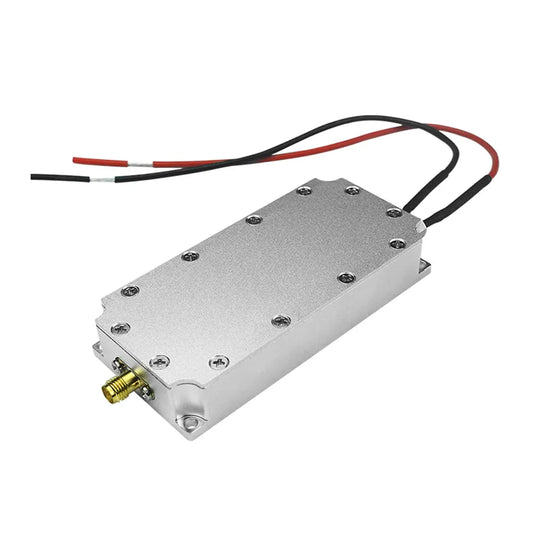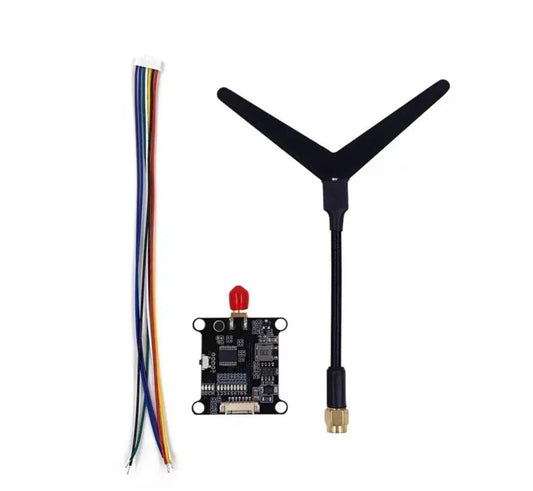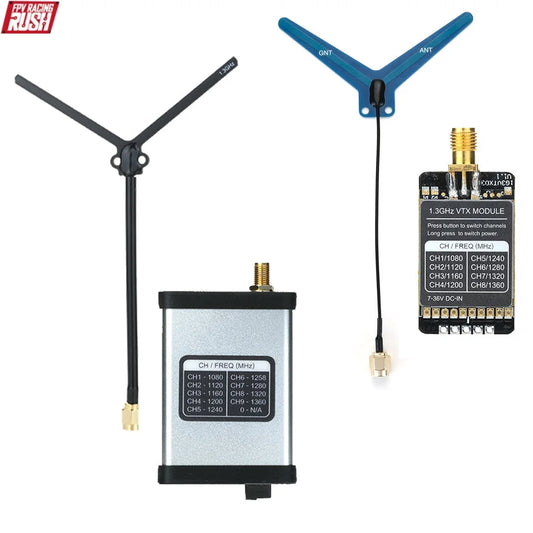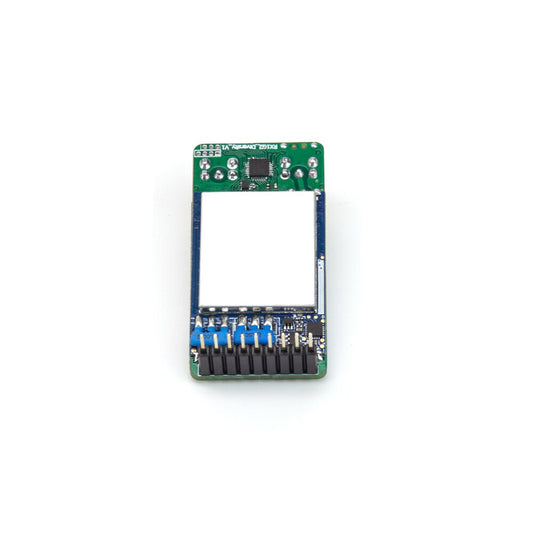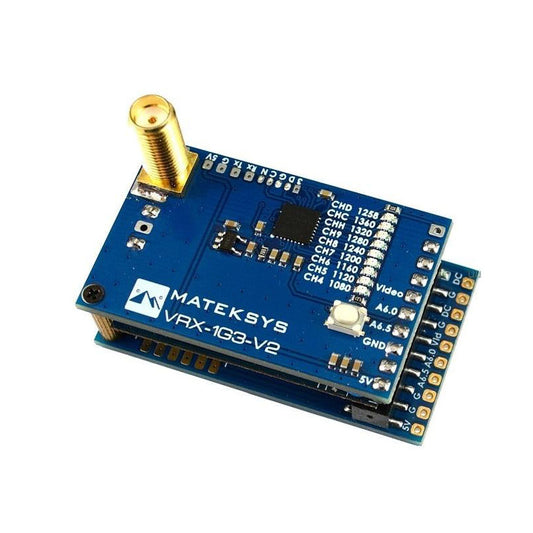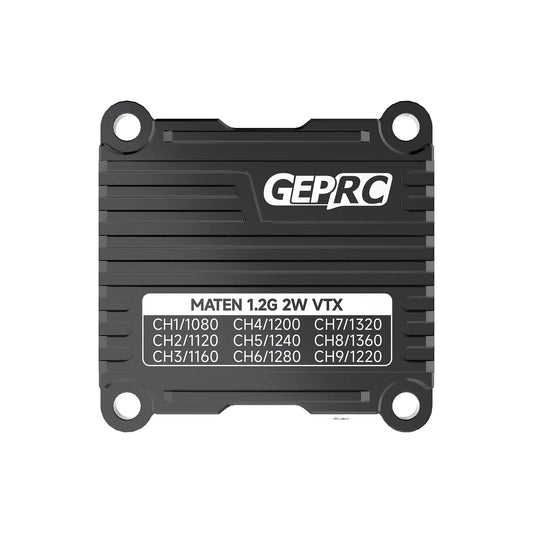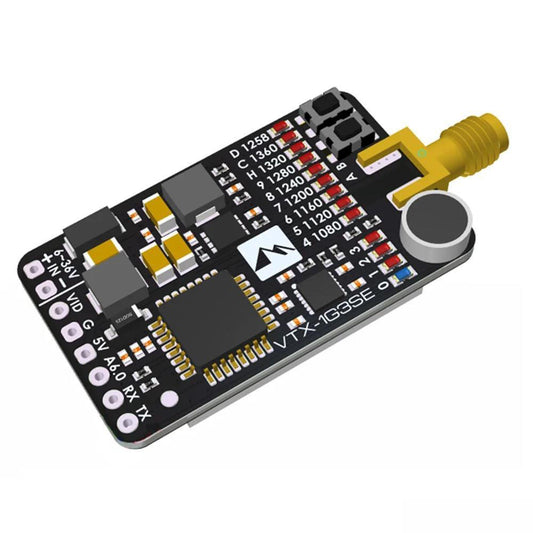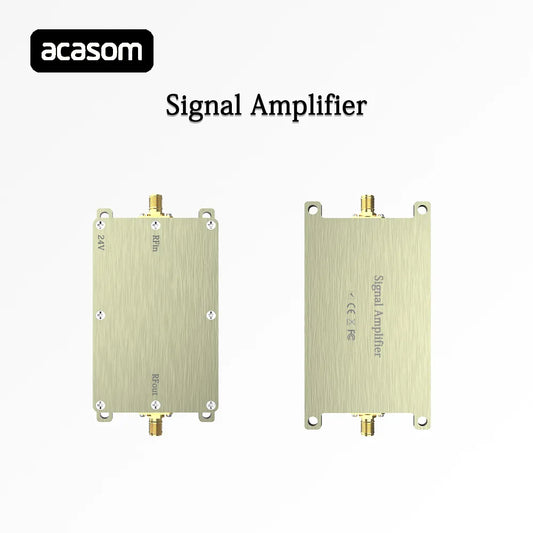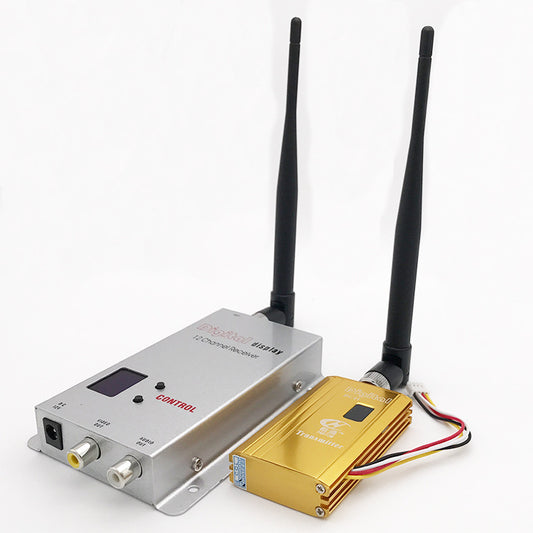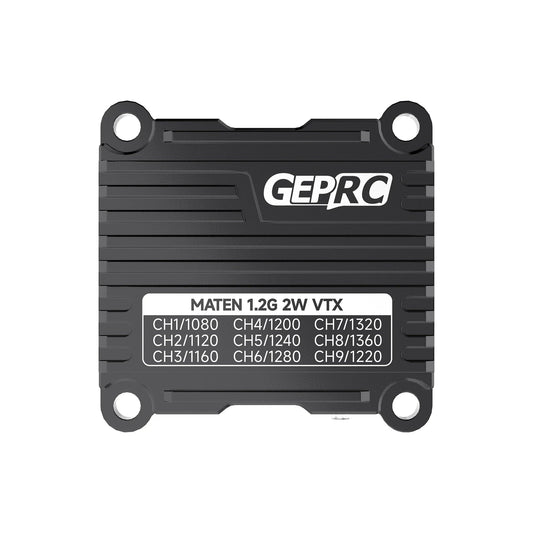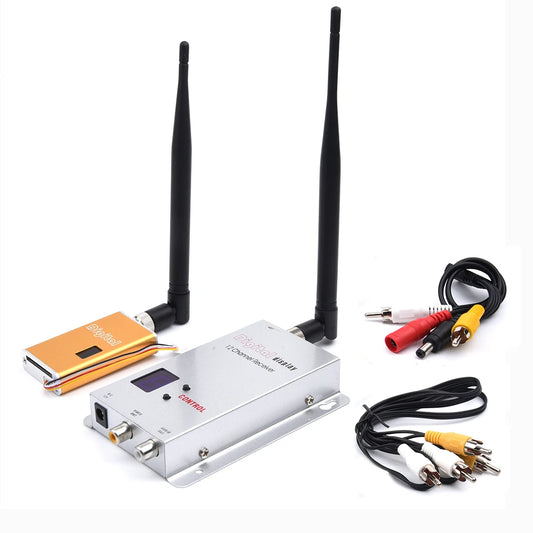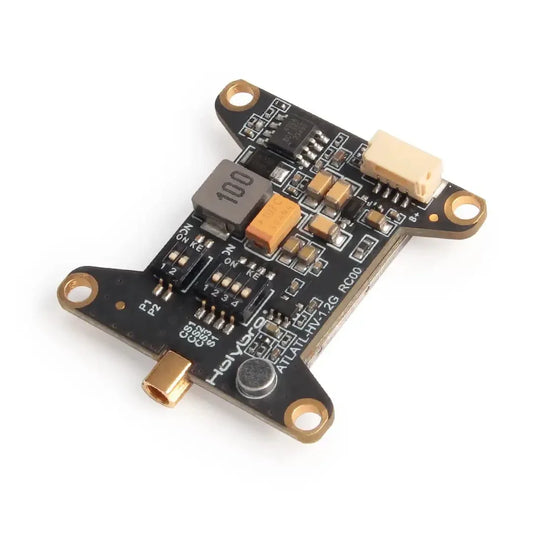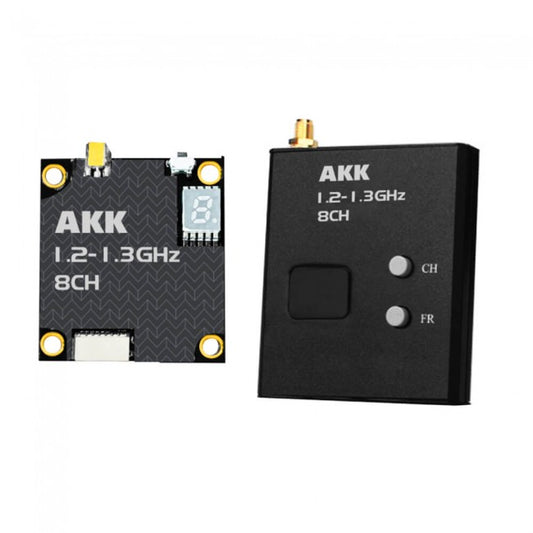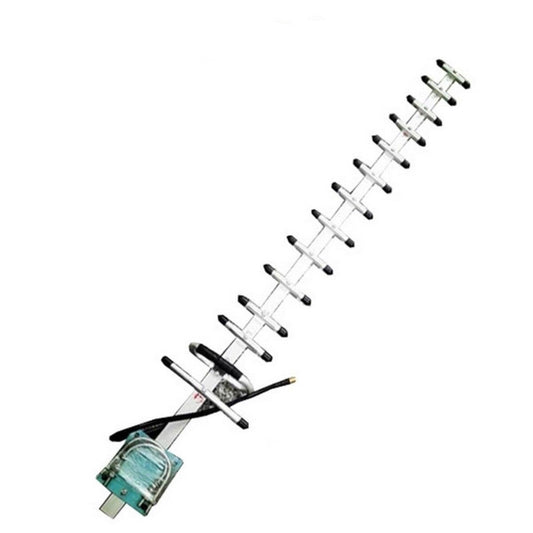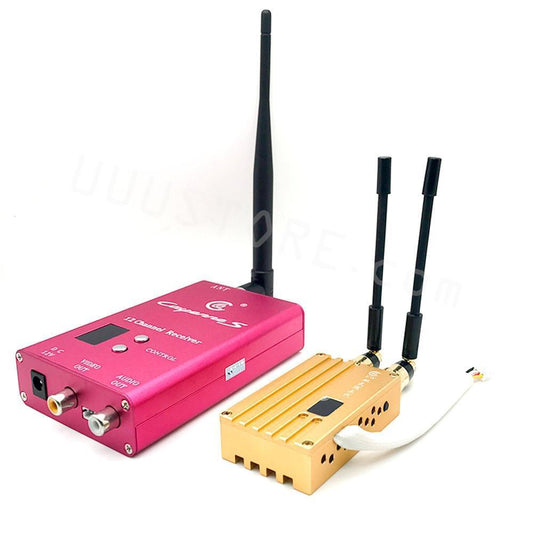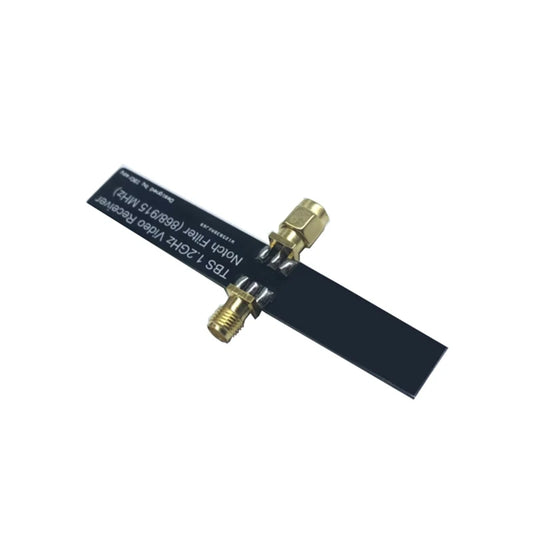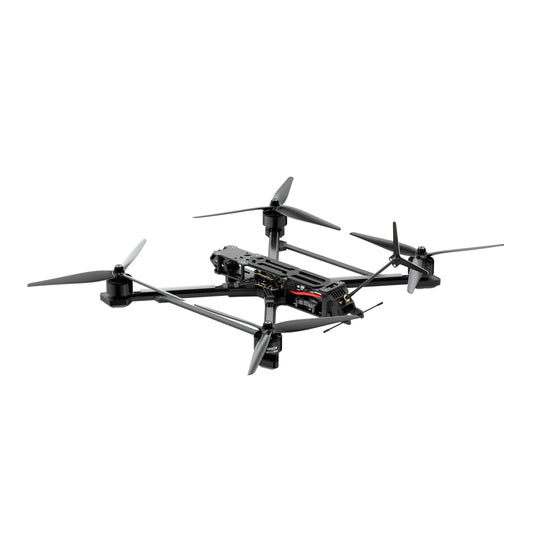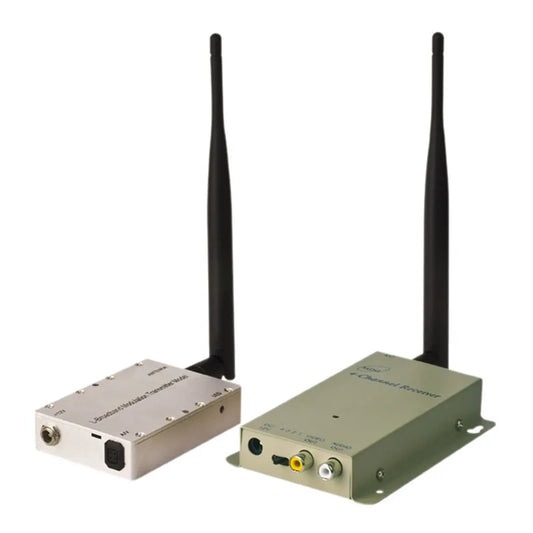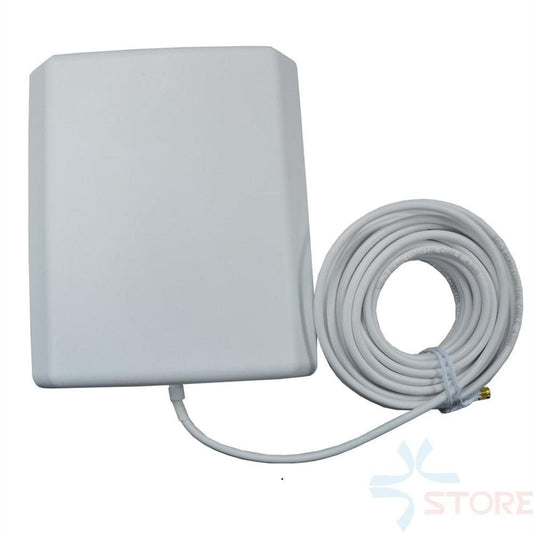-
1.2 1.3 GHz 13dBi YAGI Beamed Directional Antenna 1.3G High Gain FPV Antenna for 1.2Ghz Video Receiver
Regular price $67.13 USDRegular priceUnit price per -
10W Anti Drone Module - 433M 800M 900M 1.2G 1.4G 1.5G 2.4GHZ UAV Countermeasure Module UAV Singal Amplifier RF Anti Drone
Regular price $80.69 USDRegular priceUnit price per -
RUSHFPV 1.2G 1.3GHz 4W Long Range VTX with SMA Omni Antenna, IRC Tramp Control, Adjustable Power for FPV Drone
Regular price $85.12 USDRegular priceUnit price per -
Matek VTX-1G3SE / VRX-1G3-V2 1.2G 1.3G 800mw 9CH VRX - Matek System Video Transmission Receiver For RC FPV Drone Aircraft Helicopter Model Parts
Regular price From $22.48 USDRegular priceUnit price per -
Rush 1.3G 1.2G 800MW 8CH VTX - 7-36V FPV Audio Video Transmitter Receiver Module for RC Remote Multi-Rotor DIY Parts
Regular price From $14.76 USDRegular priceUnit price per -
SKYZONE 1.2GHz Diversity Receiver 4db antenna
Regular price $89.78 USDRegular priceUnit price per -
MATEKSYS VRX-1G3-V2 Receiver - 1.2Ghz 1.2g 9CH Wide band FPV Video Receiver for RC Drone Goggles Monitor Long range Matek System
Regular price $129.49 USDRegular priceUnit price per -
GEPRC MATEN 1.2G 2W VTX - 1080-1360MHZ/25-2000mW Pit 5V@600mA 14.5g For FPV Drone
Regular price From $8.11 USDRegular priceUnit price per -
Matek System VTX-1G3SE-9 Transmitter - 1.2G/1.3GHz 9CH INTL 0.1mW/25mW/200mW/800mW FPV Transmitter For racing drone Goggles instead VTX-1G3-9
Regular price $72.48 USDRegular priceUnit price per -
1.2G 1.3G Analog VRX Receiver for RUSHFPV V2 Recording DVR With Circularly Polarized Antenna
Regular price From $16.00 USDRegular priceUnit price per -
1.2GHz 50W RF High Power Amplifiers wireless Signal Extender Sweep Signal Source For Drone FPV GPS
Regular price From $91.30 USDRegular priceUnit price per -
1.2G 1.5W 8CH VTX / 12CH VRX - 1.2GHZ 1500mW 8Channel Wireless FPV Tranmsitter and 12 Channel Receiver Professional Kit for CCCTV DJI Phantom
Regular price From $53.57 USDRegular priceUnit price per -
1.2GHz 1.3GHz 1.6W 9CH VTX - 25mW/1600mW 7-28V FPV Transmitter Module for RC FPV Long Range Airplane Drone
Regular price $36.43 USDRegular priceUnit price per -
GEPRC MATEN 1.2G 2W VTX - 25mW/2000mW VTX Transmitter Transmitting Module 1080 Mhz -1360 Mhz for FPV Long Range Racing Drone
Regular price From $9.12 USDRegular priceUnit price per -
1.2G 5W VTX - Miniature FPV Video Sender 1200Mhz 5000mW Audio Video Wireless Transmitter and Receiver LOS Long Distance
Regular price From $45.00 USDRegular priceUnit price per -
HolyBro Atlatl HV V2 1.2GHz 1W VTX - 2-8S LiPo 30.5X30.5mm Video Transmitter for FPV Long Range Drone DIY Parts
Regular price $59.64 USDRegular priceUnit price per -
AKK 1.2GHz/1.3GHz Video Transmitter and Receiver - 8 Channels 1.2W 1.6W 2W 2.5W 3W VTX VRX
Regular price From $65.00 USDRegular priceUnit price per -
14dbi 1.2G Yagi antenna 1180-1220mhz 1.2Ghz wireless transceiver antenna yagi antenna 14 unit SMA with 3m cable for fpv
Regular price $108.69 USDRegular priceUnit price per -
1.2G 1.2GHz Clover Leaf Antenna Circular Polarized SMA male for 1.2Ghz 1.3Ghz Video Transmitter Receiver LawMate Partom
Regular price From $14.36 USDRegular priceUnit price per -
1.2G 8W 6CH VTX 12CH VRX - High Power Wireless Analog Video Transmitter 12CH Receiver FPV Transmission System for RC Models UAV Airplane FPV Drone
Regular price From $45.00 USDRegular priceUnit price per -
GEPRC MATEN 1.2G 5W VTX PRO – High Power 1.2GHz 1.3GHz 9Channel Long Range Video Transmitter for FPV Drone with IRC Tramp Control
Regular price $108.00 USDRegular priceUnit price per -
RCDrone 1.2G 1.3G 5W 8CH VTX & 12CH VRX - 20KM Long Distance FPV Video Transmission
Regular price From $39.00 USDRegular priceUnit price per -
RCDrone 1.2G 1.5W 8CH VTX for Long Range FPV Drone
Regular price $55.00 USDRegular priceUnit price per -
RCDrone 1.2G 12CH VRX Receiver – High-Performance FPV Audio-Video Transmission
Regular price $49.00 USDRegular priceUnit price per -
Rushfpv 1.2G 1.3G 4W 8CH VTX - High Power Analog Video Transmitter for Long-Range FPV Drones
Regular price $63.98 USDRegular priceUnit price per -
ACASOM Portable VIC-4 900M 1.2G 2.4G 5.8G - 20W 50W 4 Channel Long Distance Drone Signal Jammer for Anti FPV
Regular price From $1,699.00 USDRegular priceUnit price per -
Filter (868/915 Mhz) Tbs 1.2Ghz Notch Fpv 1.3G Picture Transmission Vrx Notch Filter
Regular price $5.75 USDRegular priceUnit price per -
GEPRC EF10 10inch FPV Drone - 1.2G 2W 2KM Long Range 4KG Heavy Payload Freestyle Drone
Regular price From $405.25 USDRegular priceUnit price per -
1.2G 4W 4000mW VTX - PAL/NTSC Wireless AV FPV Transmitter Receiver Combo 2-3KM for RC FPV Drone
Regular price $132.07 USDRegular priceUnit price per -
0.8G 0.9G 1.2G 1.3G 14dbi panel antenna transmitting antena For Video transceiver FPV antenna repeater
Regular price $38.34 USDRegular priceUnit price per -
Axisflying TERK 1.2G 4W Analog VTX – Long‑Range Wireless Video Transmitter, IRC Tramp, 7‑30V, SMA, Fan‑Cooled
Regular price $102.00 USDRegular priceUnit price per -
STARTRC Magnetic ND & CPL Filter Set for DJI NEO – CPL Filter Accessories ND8 ND16 ND32, 19×2.3mm, 1.2g/pc
Regular price From $33.00 USDRegular priceUnit price per$0.00 USDSale price From $33.00 USD -
DarwinFPV MARK4 6S 7-Inch Long Range FPV Drone – 5.8G / 1.2G VTX, 2807 1300KV Motor, Caddx Ratel2 Camera
Regular price From $222.00 USDRegular priceUnit price per -
ACASOM 1.2GHz Drone Signal Amplifier - 10W 20W 40W 50W RF High Power Wireless Signal Extender Sweep Signal Source For Drone GPS
Regular price From $99.00 USDRegular priceUnit price per -
1.2G 1.3G 800mW 8CH VTX & VRX - Long Range FPV Video Transmission System
Regular price From $18.00 USDRegular priceUnit price per -
1.2G 1.3G 3W 8CH VTX - FPV Audio Video Transmitter for RC FPV Long Range Drone Airplane
Regular price $67.11 USDRegular priceUnit price per

